To create a successful vanilla-citrus perfume oil blend, you'll need to master five key techniques. Start with proper note ratios: 30% citrus top notes, 50% floral middle notes, and 20% vanilla base notes. Use high-quality essential oils and dilute to 15-20% concentration in jojoba carrier oil. Layer your scents strategically, starting with vanilla on moisturized skin. Test on blotter strips and allow your blend to age. These foundational steps will open your path to professional-quality fragrances.
Understanding Essential Oil Notes for Vanilla-Citrus Harmony
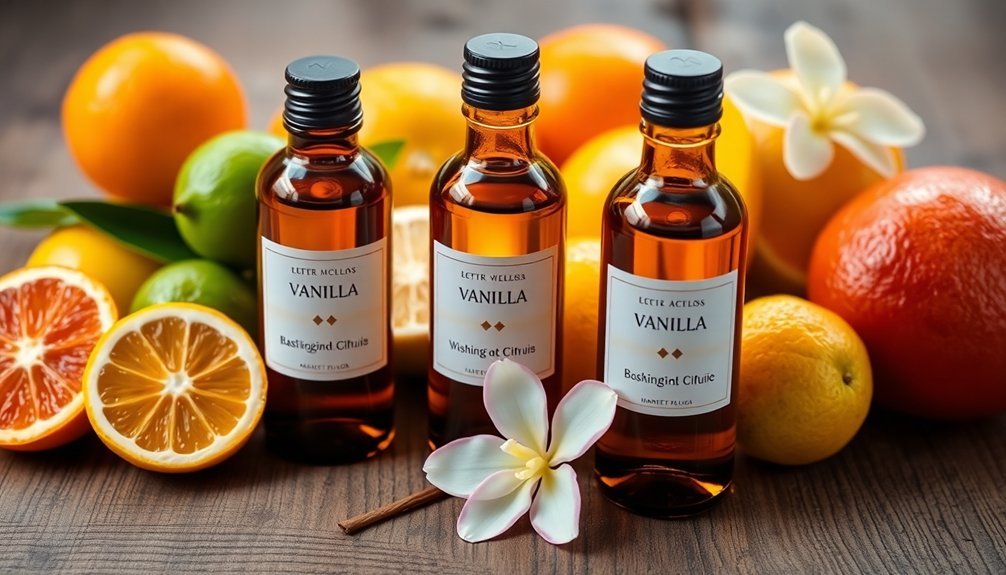
When creating a vanilla-citrus perfume oil, understanding the interplay between essential oil notes is crucial for achieving a balanced blend.
You'll want to start with citrus oils like lemon, lime, or orange as your top notes, which provide the immediate burst of freshness in your fragrance.
For the middle notes, consider adding herbs or florals like rose geranium to create depth and complexity as the scent develops. Similar to how sage and bois de rose create an intricate middle layer in Citrus Harmony, these notes help bridge your fragrance's elements.
Vanilla, serving as your base note, will form the foundation of your blend, offering lasting warmth and richness that anchors the entire composition.
Vanilla creates a luxurious foundation in perfumery, imparting deep warmth and rich undertones that ground the entire fragrance blend.
To guarantee your blend's success, you'll need to experiment with different ratios of these notes.
The right balance will allow your fragrance to evolve beautifully, with the citrus providing initial brightness while the vanilla delivers enduring sweetness.
Proper Dilution Ratios for Long-Lasting Fragrance
To create a long-lasting vanilla-citrus perfume oil, you'll need to master the art of proper dilution ratios. For an Eau de Parfum strength blend, aim for a 15-20% concentration of essential oils in your carrier base, while being mindful of skin sensitivity.
Follow the 30/50/20 rule when combining your vanilla and citrus notes. This means using 30% top notes (primarily citrus), 50% middle notes, and 20% base notes (including vanilla) to achieve ideal balance and longevity.
Remember that citrus oils are typically more volatile, while vanilla provides stability as a base note. Using jojoba oil as carrier will help maintain the fragrance blend's integrity due to its close resemblance to natural skin oils.
Always start with a patch test of your diluted blend to verify skin compatibility. If you're using particularly potent oils, you might need to adjust these ratios downward to prevent irritation while maintaining fragrance impact.
Layering Techniques for Depth and Complexity
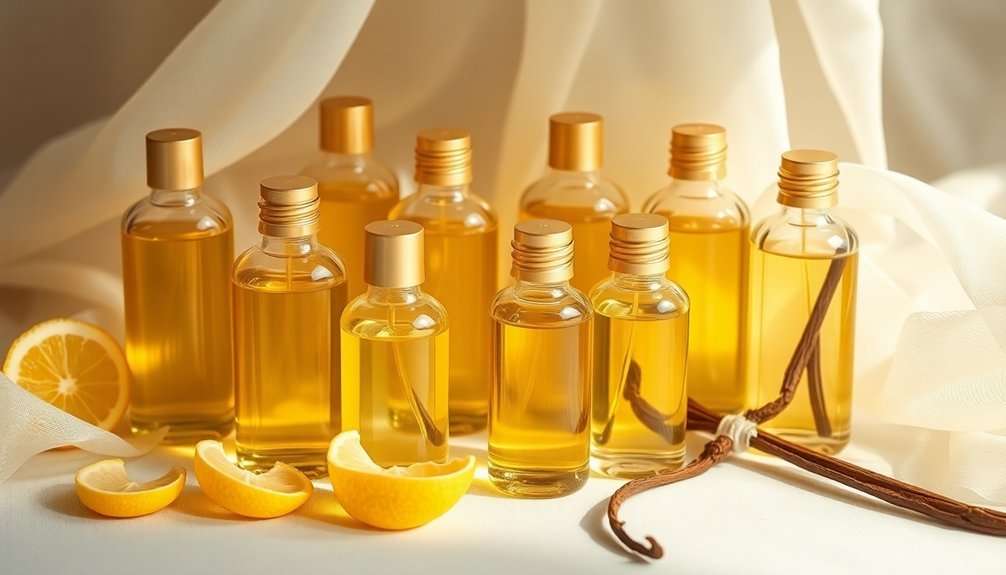
Building upon your knowledge of proper dilution ratios, mastering layering techniques will elevate your vanilla-citrus perfume oil to new levels of sophistication. Start by applying your vanilla base note to moisturized skin, allowing it to dry completely before adding citrus top notes. You'll achieve the best results by focusing on pulse points and using complementary product forms. This ancient practice draws from Middle Eastern fragrance traditions that have perfected the art of scent layering.
| Layer Level | Notes | Application Tip |
|---|---|---|
| Top | Citrus | Apply last, light mist |
| Middle | Floral | Use sparingly |
| Base | Vanilla | Start here, blend well |
For ideal depth, combine different product types – oils for the base, sprays for the top notes. Remember to test your combinations on blotter papers first, especially when experimenting with seasonal adjustments. In warmer months, you'll want to lighten the vanilla while amplifying the citrus notes.
Selecting Quality Oils and Carrier Bases
The foundation of a successful vanilla-citrus perfume lies in selecting high-quality essential oils and compatible carrier bases.
You'll want to source pure, undiluted essential oils from trusted suppliers who prioritize organic certification and sustainable harvesting methods. Look for oils with clear scent profiles and proper storage practices to guarantee peak quality.
For your carrier base, choose oils that complement your skin type while supporting the vanilla-citrus blend. Jojoba and fractionated coconut oil work well, as they're lightweight and won't overpower your fragrance.
Start with a dilution ratio of 15-30 drops of essential oils per ounce of carrier oil, and experiment with small batches to perfect your blend.
Remember to prioritize brands that demonstrate transparency in their sourcing and maintain strict quality control measures.
Monitoring and Adjusting Your Blend Over Time
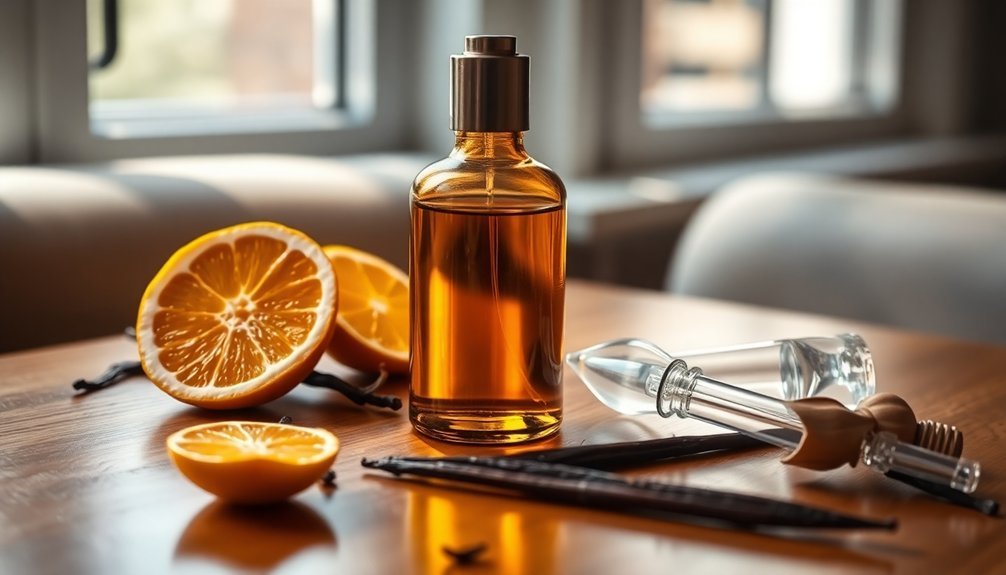
Once you've created your initial vanilla-citrus blend, you'll need to carefully monitor its evolution and make strategic adjustments over time.
Let your blend age for at least a week, checking it periodically using blotter strips to observe how the scent profile changes.
Pay attention to how the vanilla and citrus notes interact as they mature. If you notice one note becoming too dominant, make small adjustments starting with the weaker component.
Keep detailed records of any changes you make, including ratios and timing. Remember to test your adjustments on blotter strips before modifying the main blend.
Monitor your perfume in different environments and temperatures, as these factors can affect the final scent.
Once you're satisfied with the balance, perform stability tests and adjust the final concentration to achieve your desired strength.
Frequently Asked Questions
Can I Create Vanilla-Citrus Perfume Oil Blends During Pregnancy?
You can create vanilla-citrus blends in later pregnancy stages, but you'll need to be cautious. Stick to safe citrus oils, avoid risky ones, and always dilute properly with carrier oils. Consult your healthcare provider first.
How Long Will My Homemade Vanilla-Citrus Perfume Oil Remain Fresh?
Your homemade perfume oil will typically stay fresh for one to two years if you store it in a cool, dark place using an amber bottle. Check for scent changes or discoloration regularly.
What's the Best Time of Day to Apply Vanilla-Citrus Perfume Oils?
You'll get the best results applying your perfume oil in the morning. The citrus notes will energize you, while the vanilla provides lasting depth throughout your day. Reapply before evening events.
Can I Mix Synthetic Vanilla With Natural Citrus Oils?
Yes, you can mix synthetic vanilla with natural citrus oils. They'll blend well together, and the synthetic vanilla actually helps stabilize your fragrance while providing a consistent scent that lasts longer than natural vanilla.
Will Vanilla-Citrus Perfume Oils Stain My Clothes?
Yes, your vanilla-citrus perfume oils can stain clothes, especially light-colored fabrics. You'll want to apply them to your skin's pulse points instead of directly on clothing to prevent discoloration and oil marks.

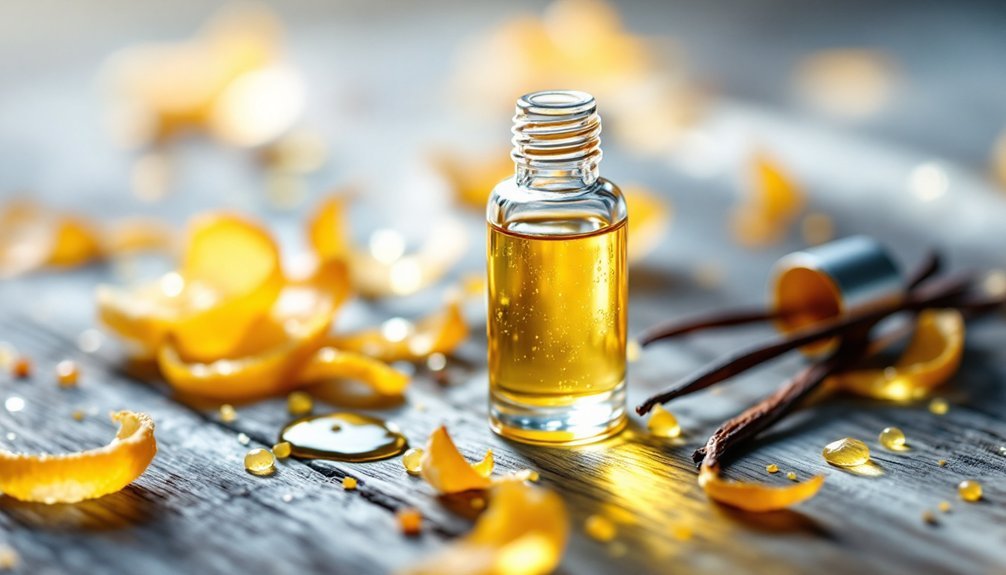
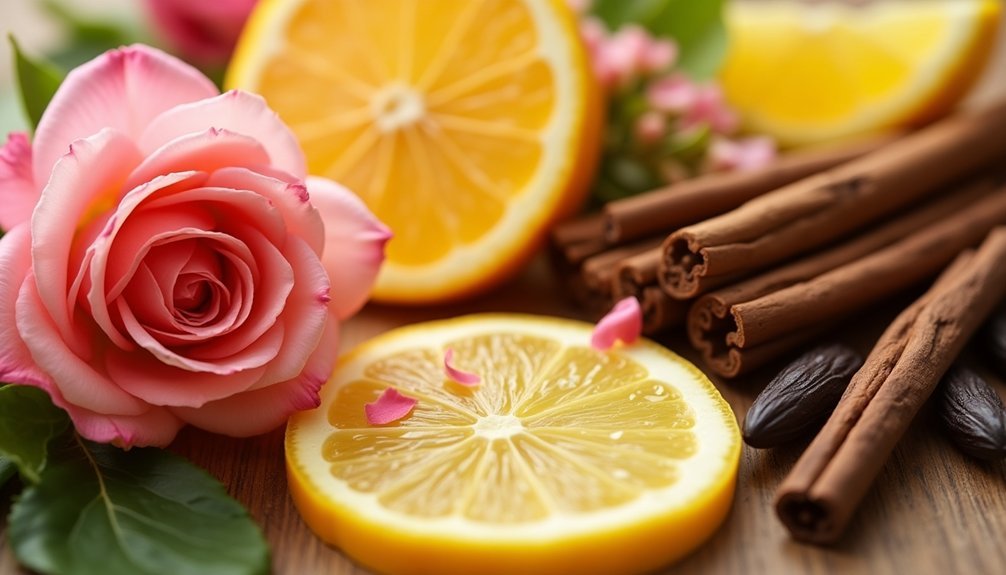

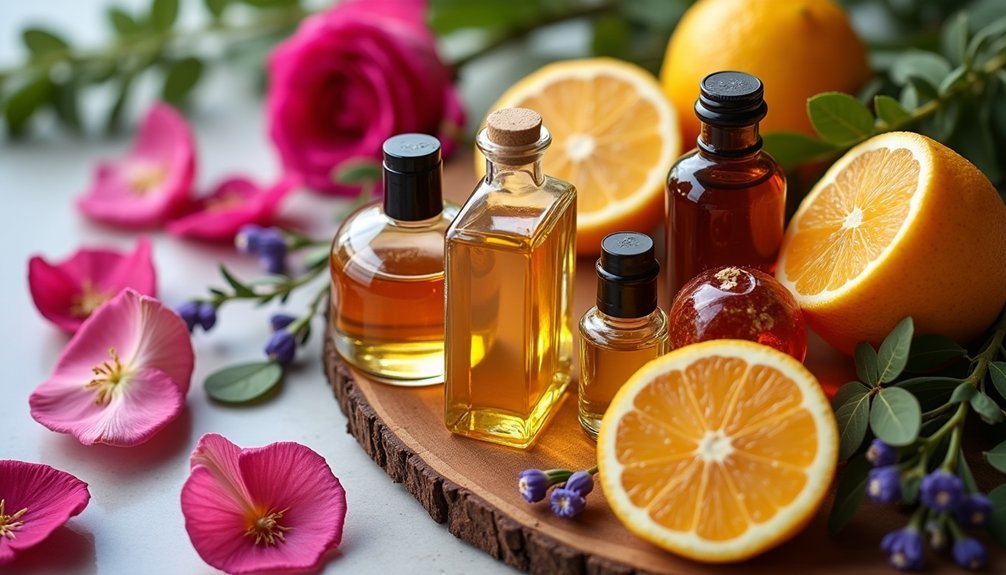
Leave a Reply